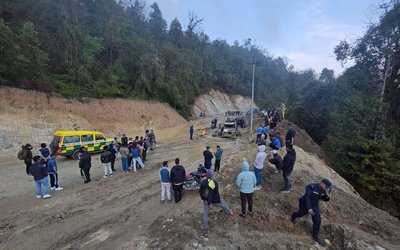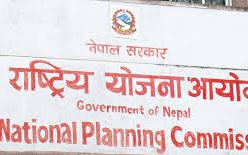
India’s Union Ministry of Environment eases India-Nepal Pancheshwar project assessment guidelines.
An expert panel of India’s environment ministry has waived off the requirement of joint mechanism to assess its environmental impact to expedite work on the Pancheshwar Multipurpose Project, a bi-national scheme, the primarily aimed at energy generation and irrigation benefits in India and Nepal.
According to reports published in Indian media, the environment ministry’s Expert Appraisal Committee (EAC) for river valley and hydroelectric projects in May last year had called for a joint mechanism for the environment impact assessment (EIA) of the project.
Interestingly, the treaty was ratified by Nepal’s parliament during the first tenure of current prime minister Sher Bahadur Deuba in 1996 despite vehement opposition in parliament. Even the main opposition party CPN-UML split on the basis of pro and anti-Mahakali treaty.
Indian media reports that the decision has been taken to avoid delay in the project which is strategically important for India.
In a recent meeting, the EAC was of the view setting up of a Joint Mechanism would delay the progress of the project.
“The EAC is of the view that as of now and considering the progress of preparation of EIA reports, setting up of the Joint Mechanism would rather delay the process of this important international project. Hence, let the Public Hearing be conducted based on the EIA report for Indian portion and the project proponent may approach the Ministry for final appraisal for environmental clearance,” said the minutes of the meeting.
Pancheshwar Multipurpose Project will be located in Uttarakhand and Nepal and will be implemented by M/s Pancheshwar Development Authority, Ministry of Water Resources, River Development and Ganga Rejuvenation.
The proposed project is envisaged on river Mahakali (known as Sarada in India) which forms the international boundary between India and Nepal, dividing the Far Western Development Region of Nepal from the Uttarakhand. It is a bi-national scheme, primarily aimed at energy generation and with other benefits too.
Environment ministry waives off requirement of a joint mechanism to assess the environmental impact of 5,600 MW India-Nepal Pancheshwar multi-purpose project.
“As far as joint mechanism set up is concerned, the EAC is of the view that as of now and considering the progress of preparation of EIA (Environmental Impact Assessment) reports, setting up of the joint mechanism would rather delay the process of this important international project,” noted the EAC in its latest meeting.
“Hence, let the public hearing be conducted based on the EIA report for Indian portion and the project proponent may approach the (environment) ministry for final appraisal for environmental clearance,” said the committee, as per the minutes of the meeting which were reviewed by Ministry.
The EAC had also observed that “skill mapping of the project effected families shall be carried-out and suitable provisions should be made in R&R (Resettlement and Rehabilitation) plan”.
The Pancheshwar multi-purpose project is envisaged to be built on the river Mahakali (known as Sarada in India), which divides the far western development region of Nepal from Uttarakhand in India.
According to media report, the project includes a rock-fill dam, which is 315 metres in height from the deepest foundation level, and is proposed to have two underground powerhouses with an installed capacity of 5,600MW one on each bank of the river. The total submergence area is 11,600 hectares (India’s 7,600 hectares and Nepal’s 4,000 hectares). The project is primarily aimed at energy production; in addition, it will provide water for irrigation.
It is being spearheaded by the Pancheshwar Development Authority (PDA) constituted under Article 10 of the Mahakali Treaty between India and Nepal.

Mahakali River File Photo

Tanakpur Barrage
- FORMER KING GYANENDRA: Bating Constituional Monarchy
- Apr 28, 2025
- NC-UML COALITION: In Turmoil
- Apr 27, 2025
- TEACHERS ON STRIKE: Students' Future In Jeopardy
- Apr 25, 2025
- NEPAL-THAILAND: Joint Business Council
- Apr 13, 2025
- BIMSTEC SUMMIT: Nepal’s Stand
- Apr 11, 2025















